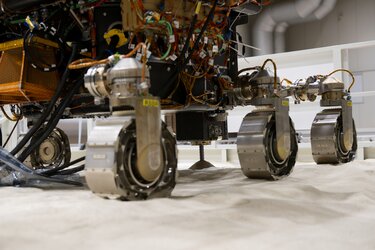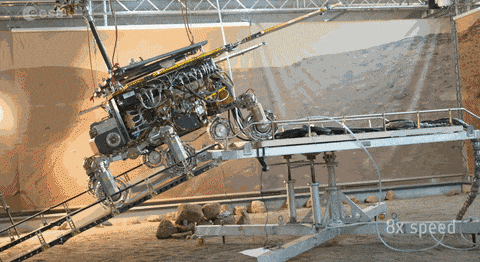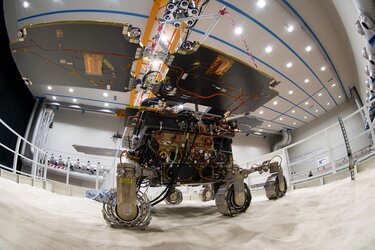

Wheels detail of ExoMars Amalia rover
ESA's Rosalind Franklin the rover has six wheels and a unique way of moving across the Red Planet. Each wheel pair is suspended on a pivoted bogie so each wheel can be steered and driven independently.
Rosalind’s twin on Earth, known as Amalia, has successfully left the platform in a Mars terrain simulator at the ALTEC premises in Turin. The test model borrows its name from renowned astrophysicist Professor Amalia Ercoli Finzi. Amalia was the first woman to graduate in aeronautical engineering in Italy, and she strongly pushed for the development of the ExoMars drill already 20 years ago.
Engineers are using the Amalia rover to recreate different scenarios and help them take decisions that will keep Rosalind safe in the challenging environment of Mars. The model is fully representative of what the rover will be able to do on the Red Planet.
Amalia has so far demonstrated drilling soil samples down to 1.7 metres, drive through rough terrain and operate all the instruments while sending scientific data to the Rover Operations Control Centre (ROCC), the operational hub that will orchestrate the roaming of the European-built rover on Mars.





